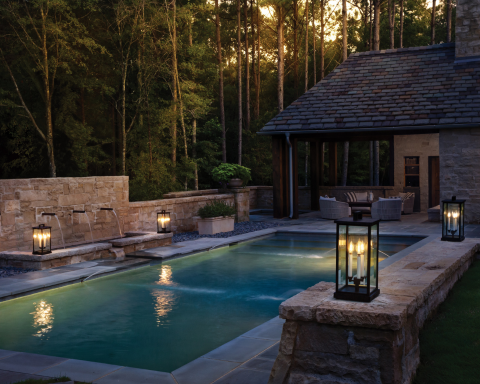Free Ground Shipping on Orders Over $49 Details & Exclusions Excludes Curb Side Delivery (LTL). Lower 48 United States Only.
LED, or Light Emitting Diode, lights illuminate when an electrical current passes through a semiconductor. The heat that is generated by this reaction is automatically absorbed by a substantial heatsink that’s featured on every light to help it increase longevity. It’s partly because of these heatsinks that makes the LED bulb so appealing; heat is the enemy of power, and reducing heat generation in a light serve to extend its overall life.
LED lights are also measured in two different ways; by their color temperature and the lumens they produce. Because they use significantly less power and are gaining in efficiency with each generation, whereas older bulbs are consistent in their wattage being representative of the amount of light put out, LED bulbs can vary in efficiency a bit more. What this means is that the bulbs are now rated by their Lumen rating, or how much light they put out, versus how much power they draw. Understanding how LEDs work and the opportunities that they present to you as a homeowner are key to helping you make a decision as to how you light your home.
Why are LEDs Great?
So why are LEDs suddenly exploding in popularity? There’s a few very good reasons for this. LEDs are extremely power efficient compared to more traditional light bulbs; providing up to 85% increased efficiency than standard compact fluorescent bulbs. The value proposition used to be much more difficult when the first LED bulbs started arriving for home and commercial use because of the pricing difference between them and more traditional bulbs. However; with the advancement of technology and increasing the efficiency of the manufacturing process; we are now at a critical tipping point in lowering the cost of LED bulbs to where the price becomes almost negligible.
While an LED bulb is still more expensive than your traditional counterpart up front, the longer lifespan of LED bulbs and reduced power consumption give it an easy trajectory to surpass its competitors in total savings over the life of the bulb. The tech industry has also broadly adopted LED lighting, and as a result the selection and functionality of the bulbs get better every day.
The functionality of bulbs, you say? What else can there be besides turning them on? Well, thanks to technology we have a wide array of bulbs with different capabilities; some like Wi-Fi, Bluetooth, and being able to operate or be timed from a smartphone are all things that have only come about in the past few years but show us what lighting in 2016 is all about. These “Smart Bulbs” are a great addition to any home looking to bring convenience, longevity, and power efficiency to help illuminate their lives.
Because of the flexibility of an LED bulb to emit nearly any color on the spectrum; bulbs are also rated by their color temperature as well. The color temperatures can range from warm to cool, and some models can go beyond that and display any color you see fit. Since colors are rated by their Kelvin Temperature scale; this handy chart will give you a good idea of what to look for in the ratings listed for a particular bulb.
The net result of all of the hard work and research and development that’s been done over the past 5 years is:
– Lower Power Consumption
– Changeable Colors
– WiFi and Bluetooth Connectivity
– Between 35,000 and 50,000 hour battery life. (That’s between 3 to 6 years of constant on-time, depending on the variation of the bulb)
They’re also incredibly diverse in their applications. Whether it’s LED Outdoor Lighting, LED Ceiling Lights or even LED Wall Lighting, there are available LED lights to suit just about any need. On top of everything else; the expanded lifespan of the bulbs and manufacturing process is significantly better for the environment. Before you go through even the lowest lifespan LED bulb on the range, you’ll likely go through 3 Compact Fluorescent (given an 8,000 hour life) bulbs or as many as 40 incandescent bulbs (given a 1,200 hour lifespan) before you go through a single LED bulb. Lower power consumption and less waste means a direct improvement to the environmental impact that bulbs have had for so long.
Any way you cut it, LED lights are the future. As long as engineers are able to work on the technology it’ll become longer-lasting and even more affordable than they already are. The increased cost of the fixtures and bulbs can mean that you have to plan carefully, so it might be best to start with planning on lighting a room in your house where it will be most effective and slowly moving all of your fixtures over to the new standard. 1800Lighting can help set you up with a variety of fixtures that make use of LEDs. Put our experts to work for you and make sure that you’re on the newest wave of sustainable energy technology right at your fingertips.
PRO TIP: No more replacing, no more high energy bills, any color you can imagine and significantly colder operating temperature? The case for LEDs is getting harder to ignore by the day, so make sure you have an expert in your corner trying to understand your needs, and let 1800Lighting be that expert.








